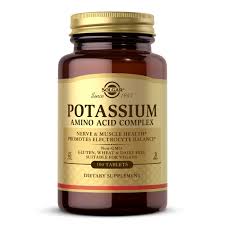Blog
Potassium Acid: Understanding Its Properties and Uses
Potassium Acid: Understanding Its Properties and Uses
Potassium acid is a compound that plays a crucial role in various chemical and industrial processes. By understanding potassium acid, its properties, and its uses, you gain valuable insights for both academic studies and practical applications. In this article, we’ll explore what potassium acid is, its characteristics, and its diverse applications.
What is Potassium Acid?
Potassium acid refers to a compound containing potassium and an acidic component. We often use it alongside other chemicals and compounds to achieve specific chemical reactions or functions. Potassium acid is essential in various industrial processes and chemical research.

Properties of Potassium Acid
The properties of potassium acid are key to understanding its applications and handling:
- Chemical Composition: Potassium acid usually consists of potassium ions and acidic anions. The specific composition can vary depending on the type of potassium acid.
- Solubility: Many forms of potassium acidic compound dissolve in water, making them useful for various applications in aqueous solutions.
- Reactivity: Potassium acidic compound reacts with other substances, making it valuable for chemical synthesis and industrial processes. Its reactivity can depend on its form and concentration.
Uses of Potassium Acid
Potassium acidic compound has a wide range of applications across different industries:
- Agriculture: We use potassium acidic compound in fertilizers to supply essential nutrients to plants. It enhances soil quality and promotes plant growth.
- Chemical Industry: In chemical synthesis, potassium acidic compound acts as a reagent or catalyst in various reactions, contributing to the production of other chemical compounds.
- Food Industry: Potassium acidic compound sometimes serves as an acidulant or pH regulator in the food industry. It helps maintain the desired acidity levels in food products.
Benefits of Potassium Acid
Using potassium acidic compound offers several benefits:
- Enhanced Growth: In agriculture, potassium acidic compound improves plant health and increases crop yields.
- Improved Reactions: In the chemical industry, potassium acidic compound supports efficient and controlled reactions, resulting in better product quality.
- Product Stability: In the food industry, potassium acidic compound stabilizes products, ensuring their freshness and safety for consumption.
How to Handle Potassium Acid Safely
When working with potassium acidic compound, follow these safety guidelines:
- Protective Equipment: Wear appropriate protective gear, such as gloves and safety goggles, to avoid contact with the acid.
- Proper Storage: Store potassium acidic compound in a cool, dry place, away from incompatible substances, to prevent unwanted reactions.
- Handling Procedures: Follow proper handling procedures to minimize the risk of spills or accidents. Ensure good ventilation when using potassium acidic compound in enclosed spaces.

Conclusion
By understanding potassium acidic compound and its properties, you can leverage its benefits effectively across different applications. Whether you work in agriculture, chemical manufacturing, or food processing, knowing how to use potassium acidic compound can lead to better results and increased efficiency.
Frequently Asked Questions
What is potassium hydrogen used for?
Potassium hydrogen compounds, such as potassium hydrogen phthalate (KHP), have various practical uses:
- Chemical Analysis: Chemists use potassium hydrogen phthalate as a primary standard in titrations to calibrate solutions. It helps determine the concentration of other solutions accurately.
- Baking and Cooking: Potassium hydrogen tartrate, known as cream of tartar, acts as a stabilizer in baking. It helps maintain the texture of whipped egg whites and is used in baking powders.
- Agricultural Use: Some potassium hydrogen compounds are added to fertilizers to supply essential nutrients for plant growth.
Is KHP a strong acid?
Potassium hydrogen phthalate (KHP) is not a strong acidic compound. It is a weak acid with a low dissociation constant. KHP is valuable in titrations because it provides a stable and consistent standard for measuring the concentration of bases.
What is potassium bitartrate used for?
Potassium bitartrate, also called potassium hydrogen tartrate or cream of tartar, has several uses:
- Baking: It stabilizes whipped egg whites and is a component in baking powders, helping baked goods rise.
- Cleaning: Potassium bitartrate can be used in cleaning products to remove stains and grease.
- Chemical Reactions: It serves as a reagent in various chemical processes in laboratories.
Is potassium hydrogen tartrate an acid or base?
Potassium hydrogen tartrate, commonly known as cream of tartar, acts as an acidic compound. It is a weak acid that can help regulate pH in different formulations and reactions.

